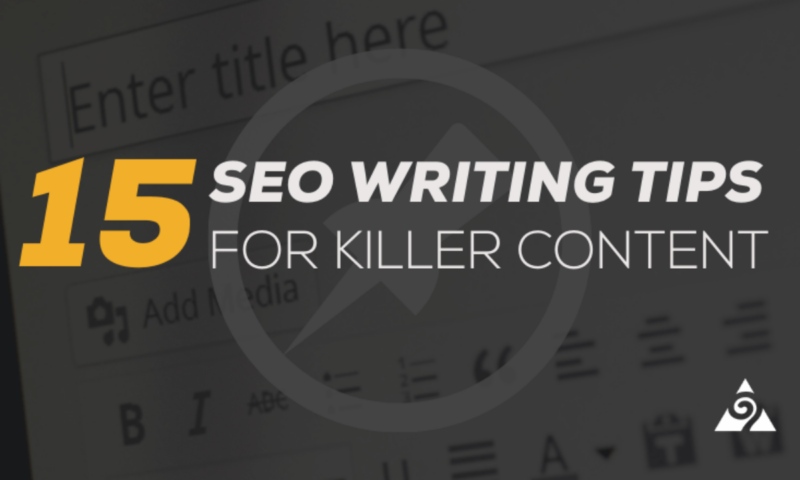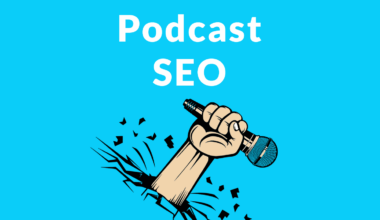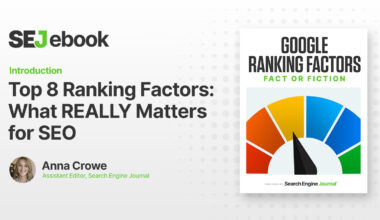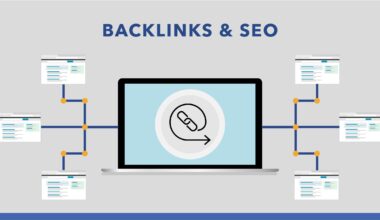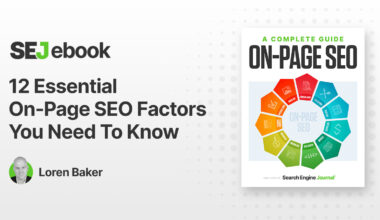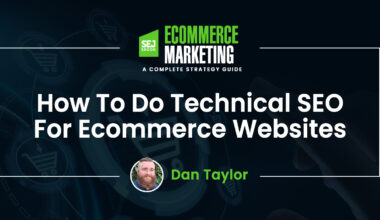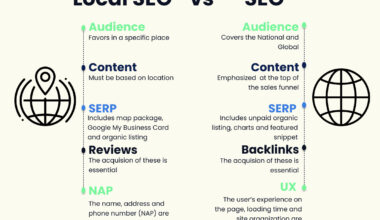Importance of Keyword Research
As a writer, it’s essential to understand the importance of keyword research when creating content for SEO. Keyword research involves identifying the words and phrases that people use when searching for information online. By using these keywords effectively, you can increase the visibility of your content on search engines like Google.
Here are some reasons why keyword research is crucial for creating killer content for SEO:
1. Targeting the Right Audience
Keyword research helps you identify the words and phrases that your target audience is using to search for information online. By using these keywords in your content, you can attract the right audience and provide them with the information they’re looking for.
2. Improving Search Engine Rankings
Using the right keywords in your content can help improve your search engine rankings. When people search for information online, search engines like Google use complex algorithms to determine which pages are most relevant to their search query. By using the right keywords in your content, you can increase your chances of appearing at the top of search engine results pages (SERPs).
3. Creating Compelling Content
Keyword research can also inspire you to create compelling content that meets the needs of your target audience. By understanding the questions and concerns of your target audience, you can create content that addresses their needs and provides them with the information they’re looking for.
To conduct keyword research, there are several tools available, such as Google Keyword Planner, Moz Keyword Explorer, and SEMrush. These tools can help you identify high-volume keywords that are relevant to your target audience and your content.
Once you have identified your target keywords, it’s important to use them strategically in your content. Here are some tips for using keywords effectively:
- Include your target keyword in your headline and subheadings
- Use your target keyword throughout your content, but avoid overusing it (known as keyword stuffing)
- Incorporate related keywords and phrases into your content to provide additional context
By using these tips, you can create content that is optimized for search engines and provides value to your target audience. Remember, the goal of keyword research is not to stuff your content with keywords but to create content that meets the needs of your target audience and improves your search engine rankings.
Crafting Attention-Grabbing Headlines
When it comes to creating killer content for SEO, crafting attention-grabbing headlines is a crucial step. Your headline is the first thing that people see, and it can make or break whether they click on your content. Here are some tips for creating headlines that get clicks:
1. Use Numbers and Lists
Using numbers and lists in your headlines is an effective way to grab people’s attention. It provides a clear structure for your content and makes it easy for people to skim and understand. For example, “10 Tips for Creating Killer Content for SEO” is more compelling than “Creating Killer Content for SEO.”
2. Include Power Words
Power words are words that evoke emotion and grab people’s attention. Using power words in your headlines can make them more compelling and increase the chances of people clicking on your content. Some examples of power words include “amazing,” “proven,” and “ultimate.”
3. Make it Specific
Specificity is key when it comes to crafting attention-grabbing headlines. People want to know exactly what they’re getting when they click on your content. For example, “How to Increase Your Website Traffic by 50% in One Month” is more specific and compelling than “How to Increase Your Website Traffic.”
4. Keep it Short and Sweet
Your headline should be short and to the point. People have short attention spans, and if your headline is too long, they may lose interest. Aim for headlines that are between 6-10 words.
5. Test and Iterate
Finally, it’s important to test and iterate your headlines. Use A/B testing to try out different headlines and see which ones perform best. This will help you refine your headline-writing skills and create content that resonates with your audience.
Remember, your headline is the first impression that people have of your content. By following these tips, you can create attention-grabbing headlines that get clicks and improve your search engine rankings.
Utilizing Multimedia for Engagement
In today’s digital world, multimedia content is crucial for engaging with your audience. Multimedia content includes images, videos, infographics, and other forms of visual content. By incorporating multimedia into your content, you can increase engagement, improve user experience, and boost your search engine rankings.
Here are some ways to utilize multimedia for engagement:
1. Use Images and Videos
Images and videos are a great way to break up text-heavy content and add visual interest. They can also help to illustrate complex concepts or provide examples. When using images and videos, make sure they are high-quality and relevant to your content. Avoid using stock images or videos that don’t add value.
2. Create Infographics
Infographics are a visual representation of information and can be a powerful way to convey complex data. They are also highly shareable and can help to increase your content’s reach. When creating infographics, make sure they are easy to read and visually appealing. Use tools like Canva or Piktochart to create professional-looking infographics.
3. Embed Social Media Posts
Embedding social media posts from platforms like Twitter, Instagram, or Facebook can add a social element to your content. It can also help to increase engagement and drive traffic to your social media accounts. When embedding social media posts, make sure they are relevant to your content and add value.
4. Use Interactive Content
Interactive content, such as quizzes, polls, or surveys, can help to increase engagement and encourage user participation. They can also provide valuable insights into your audience’s preferences and interests. When creating interactive content, make sure it is easy to use and relevant to your content.
5. Optimize Multimedia for SEO
To ensure your multimedia content is optimized for SEO, make sure to use descriptive filenames and alt tags. This will help search engines understand what the content is about and improve your search engine rankings. Additionally, compress images and videos to reduce load times and improve user experience.
By utilizing multimedia for engagement, you can create killer content that resonates with your audience. Remember to use high-quality, relevant multimedia and optimize it for SEO to improve your search engine rankings.
Incorporating Internal and External Links
Incorporating internal and external links in your content is an essential aspect of creating killer content for SEO. Internal links are links that point to other pages within your website, while external links point to pages on other websites.
Here are some reasons why incorporating internal and external links is crucial for creating killer content for SEO:
1. Improving User Experience
Internal links can help to improve user experience by providing additional context and information. By linking to other relevant pages within your website, you can help users navigate your site and find the information they’re looking for. External links can also provide valuable resources for your readers and improve their overall experience.
2. Boosting Search Engine Rankings
Incorporating internal and external links can also help to boost your search engine rankings. Internal links can help to distribute link equity throughout your site, while external links can signal to search engines that your content is high-quality and relevant. Additionally, linking to authoritative external sources can help to improve your site’s credibility and authority.
3. Encouraging Engagement and Sharing
By including internal and external links, you can encourage engagement and sharing. Internal links can keep users on your site for longer, while external links can provide valuable resources that users may want to share with their own audiences. This can help to increase your content’s reach and improve your search engine rankings.
When incorporating internal and external links, it’s important to do so strategically. Here are some tips for incorporating links effectively:
- Use descriptive anchor text that accurately reflects the content of the linked page
- Link to relevant pages that provide additional context or information
- Avoid overusing links, as this can be seen as spammy and hurt your search engine rankings
- Link to high-quality external sources that are authoritative and relevant to your content
By incorporating internal and external links strategically, you can create killer content that improves user experience, boosts search engine rankings, and encourages engagement and sharing.
In conclusion, incorporating internal and external links is a crucial aspect of creating killer content for SEO. By improving user experience, boosting search engine rankings, and encouraging engagement and sharing, internal and external links can help to make your content more valuable and relevant to your target audience. Remember to use links strategically and avoid overusing them to create content that meets the needs of your audience and improves your search engine rankings.
Structuring Content for Readability and Scannability
When it comes to creating killer content for SEO, it’s essential to structure your content in a way that is easy to read and scan. People have short attention spans, and if your content is difficult to read or understand, they will quickly lose interest. Here are some tips for structuring your content for readability and scannability:
1. Use Short Paragraphs
Long paragraphs can be intimidating and difficult to read, especially on a screen. To make your content more readable, aim for paragraphs that are 2-3 sentences long. This will make your content look less daunting and easier to consume.
2. Use Subheadings
Subheadings are a great way to break up your content and provide a clear structure. They also make it easier for people to scan your content and find the information they’re looking for. Make sure your subheadings are descriptive and accurately reflect the content of the section.
3. Use Bulleted and Numbered Lists
Bulleted and numbered lists are another effective way to break up your content and make it easier to scan. They also provide a clear structure and help to highlight important information. Use bulleted and numbered lists when presenting steps, tips, or key points.
4. Use Bold and Italics
Using bold and italics can help to emphasize important information and make it stand out. They can also help to break up your content and make it easier to read. Use bold for headings, subheadings, and key points, and use italics for emphasis.
5. Use White Space
White space is the empty space between paragraphs, images, and other elements on your page. It’s important to use white space effectively to make your content more readable and visually appealing. Avoid cluttering your page with too much text or too many images.
By structuring your content for readability and scannability, you can create killer content that engages your audience and improves your search engine rankings. Remember to use short paragraphs, subheadings, bulleted and numbered lists, bold and italics, and white space effectively to make your content more readable and visually appealing.
In conclusion, structuring your content for readability and scannability is a crucial aspect of creating killer content for SEO. By using short paragraphs, subheadings, bulleted and numbered lists, bold and italics, and white space effectively, you can create content that engages your audience and improves your search engine rankings. Remember to prioritize readability and scannability when creating
Measuring Success with Analytics
Measuring the success of your content is an essential part of creating killer content for SEO. By analyzing the performance of your content, you can identify what’s working and what’s not, and make adjustments to improve your search engine rankings and engagement. Here are some ways to measure the success of your content with analytics:
1. Set Goals and KPIs
Before you start measuring the success of your content, it’s important to set clear goals and key performance indicators (KPIs). This will help you determine what metrics to track and what success looks like. Some common goals for content include increasing website traffic, improving search engine rankings, and boosting engagement.
2. Use Google Analytics
Google Analytics is a powerful tool for measuring the success of your content. It allows you to track metrics like page views, bounce rate, and time on page. You can also see where your traffic is coming from and what keywords people are using to find your content. Make sure to set up Google Analytics on your website and regularly check your metrics.
3. Track Social Media Engagement
Social media can be a valuable source of traffic and engagement for your content. Make sure to track your social media metrics, such as likes, shares, and comments. This will help you determine what content resonates with your audience and what social media platforms are most effective for promoting your content.
4. Monitor Backlinks
Backlinks are links from other websites that point to your content. They are an important factor in search engine rankings and can help to improve your credibility and authority. Use tools like Ahrefs or Moz to monitor your backlinks and see how they are impacting your search engine rankings.
5. Use Heatmaps
Heatmaps are visual representations of user behavior on your website. They can show you where people are clicking, scrolling, and spending the most time on your page. Use tools like Hotjar or Crazy Egg to create heatmaps and analyze how people are interacting with your content.
By measuring the success of your content with analytics, you can make data-driven decisions to improve your search engine rankings and engagement. Remember to set clear goals and KPIs, use Google Analytics and social media metrics, monitor your backlinks, and use heatmaps to analyze user behavior. By continuously analyzing and improving your content, you can create killer content that resonates with your audience and improves your search engine rankings.
In conclusion, measuring the success of your content with analytics is essential for creating killer content for SEO. By setting goals and KPIs, using Google
Final Thought
Creating killer content for SEO requires a lot of effort and attention to detail. From conducting keyword research to measuring success with analytics, there are many steps involved in creating content that resonates with your audience and improves your search engine rankings.
One thing to keep in mind is that creating killer content is not a one-time effort. It requires continuous analysis, iteration, and improvement. By regularly monitoring your metrics and making adjustments to your content strategy, you can stay ahead of the competition and provide value to your audience.
Another thing to remember is that SEO is not just about creating content for search engines. It’s about creating content that meets the needs of your target audience and provides them with the information they’re looking for. By focusing on your audience and creating content that resonates with them, you can improve engagement, increase brand awareness, and ultimately drive more traffic to your website.
In conclusion, creating killer content for SEO requires a combination of creativity, strategy, and analysis. By following the tips and best practices outlined in this article, you can create content that engages your audience, improves your search engine rankings, and ultimately drives more traffic to your website. Remember to prioritize your audience, use data to guide your decisions, and continuously iterate and improve your content strategy.
